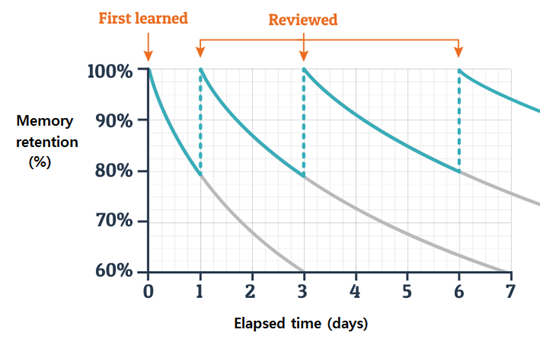February Blog 2024
How to support students with revision
As part of our professional reading, James and I have recently revisited “The Revision Revolution” by Helen Howell and Ross Morrison McGill. The book discusses how students should be taught explicit study skills from Year 7, how to make revision enjoyable, and how to embed learning to help students grow into knowledgeable and informed young adults. This is precisely the aim of our developing blended learners programme (DBLP). The book provides a comprehensive guide on how to start and sustain a revision revolution in your school, building a culture of effective study that flows through all aspects of school life.
The key points of the revision revolution …
- It is to help students grow into knowledgeable and informed young adults, not just to help them pass exams.
- It is based on the idea that students need to be taught how to revise effectively, not just told to revise.
- It involves building a culture of effective study that flows through all aspects of school life.
- It involves using a range of study techniques, including active recall, spaced repetition, interleaving, and metacognition.
The study skills that we have taken from the book (and other sources such as teachertoolkit.co.uk) and built into the DBLP are:
- Active recall: This technique involves recalling information from memory without the aid of notes or textbooks. It helps students to identify gaps in their knowledge and improve their retention of information. This technique is based on the idea that the more you practice recalling information, the better you will be at remembering it.
- To use active recall, students can create flashcards with questions on one side and answers on the other. They can then test themselves by trying to recall the answer before flipping the card over.
- Another way to use active recall is to write out what you know about a topic from memory, and then compare it to your notes or textbook to see where you need to improve.
- By practicing recalling information, students are able to identify gaps in their knowledge and improve their retention of information.
- Mind mapping is a study technique that can help students to organise their thoughts and ideas in a visual way.
- Mind mapping involves creating a diagram that connects different ideas or concepts together using branches and sub-branches. Mind maps can be used to summarise information or plan essays.
- To create a mind map, start by writing the main idea or topic in the centre of the page and drawing a circle around it. Then, draw branches radiating out from the centre circle, each representing a sub-topic or idea related to the main topic. You can then add further sub-branches to each branch, creating a hierarchical structure that connects all the ideas. Mind maps can be created using pen and paper r using software such as Microsoft Word or online tools like Get Revising. Using different colours for each key concept can help organise your thinking and keep your ideas on track.
ACTION: As a tutor, encouraging students to do either of these techniques in their 10-minute chunks. Have some blank cue cards/mindmap templates ready for them to use. As a teacher, think about what homework could be based around this.
- Spaced repetition is a study technique that involves revisiting information at increasing intervals over time. It can be explained by the ‘forgetting curve’, which is an idea that has been around in psychology literature for over one hundred years.
- The forgetting curve was first introduced by Hermann Ebbinghaus in 1885 and shows that the rate of forgetting is highest immediately after learning and then levels off over time.
- To use spaced repetition, teachers should plan to revisit key topics at certain points through activities such as ‘Blast from the past’ (Science) or retrieval quizzes.
- By revisiting information at increasing intervals over time, students can retain information in their long-term memory.

ACTION: When have you planned for this in your MTP’s and lessons? Have you considered what should be retrieved and when?
- Interleaving: This technique involves mixing up different topics or subjects during revision.
- To use interleaving, students can mix up different topics or subjects during revision. For example, instead of revising all the topics in a single subject at once, students can revise different topics from different subjects in a single revision session.
These techniques are particularly pertinent to year 11 as we move towards their final few months. I know a lot of you have planned a week-by-week schedule up to these mock exams and will be developing your final schedule based on the misconceptions shown through your marking. Please consider how the points above best suit your subjects.
- When is it best to make a mind map, and when should cue cards be used?
- How do I structure the week-by-week and class work to allow for spaced repetition?
